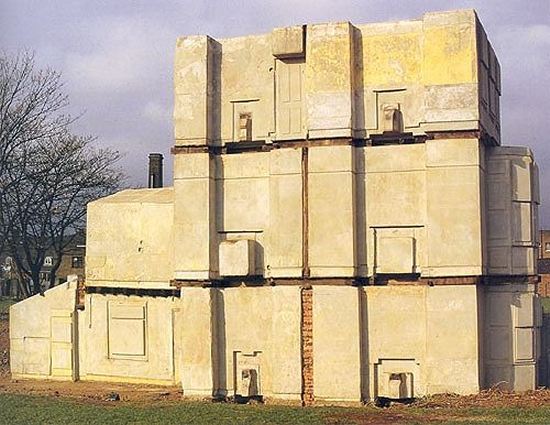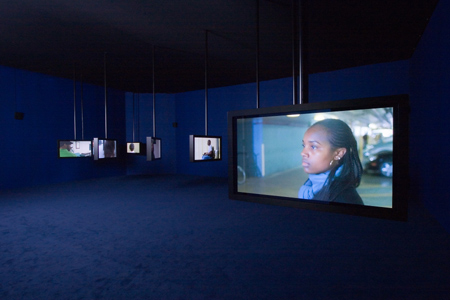The 1990s in general.
Movements such as grunge, the rave scene and hip hop spread around the world to young people during the decade, aided by then-new technology such as cable television and the Internet.
In the 1980s, the art market was devastated by the stock market crash in 1987 and a severe recession in the early 90s which caused artists to look more outside the art world for their subject matter. They began looking more into subjects such as the AIDS crisis, gun control, homelessness and class/race/gender/sexual orientation. This coincided with an emerging notion of artist as a kind of ethnographer, as well as an exploration of broken or grotesque bodies and identities by people such as Paul McCarthy and Kiki Smith.
The most known movement of the decade, Young British Artists (YBAs), became internationally known due to ambitious art work such as Rachel Whiteread's House and Damien Hirst's formaldehyde-encased animals.



Video art also became more popular in the art world with work such as Matthew Barney's Cremaster Cycle and large-scale video installations by artists such as Doug Aitken.


Artists such as Andreas Gursky and Jeff Wall used tools like photo manipulation in their art to blur the lines between fact and fiction or to make a more perfect reality.
Installation art.
Installation art can be either temporary or permanent. They can be built or displayed in museums, galleries , private or even public areas. A wide range or corporate and natural materials can be used because of their "evocative" qualities as well as using videos, performance and sound. Most installations are made to stay where they are created and are made to incorporate the space around them. Some artistic collectives such as the Exhibition Lab in New York's American Museum of Natural History made environments that looked as real as possible to showcase the natural world.
Installation art first started in the 1970s but can be identified earlier through work by Marcel Duchamp and Kurt Schwitters. The "intention" of the artist is paramount in much later installation art whose roots lie in the conceptual art of the 1960s. This is a departure of the traditional sculptures that focus on form.
Installation/Environmental art tries to make a sensory experience rather than paintings on a neutral wall or an isolated object on a pedestal.

No comments:
Post a Comment